
From the Archives
Impressions of a Land, 2018
Remarks, 2024
In 2018, Inanna Riccardi from SixtyEight travelled to the West Bank on an educational trip organised by an NGO that collaborates with a number of different organisations there. On their return, a book was published, containing a brief introduction by Inanna Riccardi, a series of photographs, and an afterword by the respected Danish cultural historian Morten Thing.
In light of the current events in the Middle East, we have chosen to begin our new series, From the Archives, by publishing here the introduction, a small selection of the images, and the afterword in its original Danish language version and the English translation that appeared in the book. At the time, the book was handed out for free at two different events, in Vanløse and at our former location on Gothersgade 167, where presentations and discussions of the issues were also held.
The events of the last five months in Gaza, which commenced with Hamas’ attack on Israeli civilians and has since seen wide-ranging military action in the Gaza Strip, has been horrific to witness in terms of the level of civilian casualties. The military action has had the character of collective punishment of the Palestinian people, and it is difficult to see how this military action could ever achieve the stated aim of eliminating Hamas. We believe that violent so-called ‘solutions’ are not solutions at all, but only lead to more hatred and the perpetuation of conflicts indefinitely, robbing the future of hope. Our greatest wish is for the international community to make good on its humanitarian and ethical principles, to create a lasting ceasefire so that humanitarian aid - the need for which must be shockingly apparent to everyone - can reach Gaza in the quantities necessary. We also hope that the international community will now take the step of working towards finding a peaceful resolution to the conflict as a whole.
Introduction (2018)
Travelling in the West Bank and Israel, and having the opportunity to get to know different people who live there and struggle in their everyday lives, had a big impact on me.
Before embarking in this journey, I read and gathered as much information as possible about the complex situation of the Israeli-Palestinian conflict. I wanted to understand rationally which reasons and needs lie behind this conflict.
However, after this journey I understood that emotions, in particular fear, are the stronger motor in driving human actions, much stronger than rational explanations.
During my journey I was constantly confronted by two strongly held positions. Both positions relied on a precise and particular definition of the other: by denying the other any form of personal and human connotation, they become merely the enemy, and as such a problem, an obstacle, which must be eliminated, eradicated.
Part of the Israeli strategy, for example, is to call all Palestinians Arabs, in this way detaching them from their bond with the land, the country of Palestine. At the same time, many Palestinians refer to all Jews as Israelis or Zionists. Becoming aware of these very simplistic denotations and misuses of terms and definitions, it is possible to understand how the process of over-generalization can establish very narrow ways of looking at each other.
The pictures presented avoid any documentary inclination. In general, I chose to refrain from presenting pictures of the wall or of weapons. Instead, I focused on producing a body of work which, through snapshots, represents my impressions of the complexity of everyday life as it is lived in this land. The honesty, the warmth, and the strength of the people I met were the most precious gifts of this journey.
I hope that this book contributes to raising awareness about the Israeli-Palestinian conflict, without reinforcing the narrative of enmity, in which the roles of victim and persecutor are clearly staked out. Instead I wish to shed light on the beauty and strength of people on both sides of the conflict. I believe that nonviolence and open dialogue are the best forms for leading the way forward.
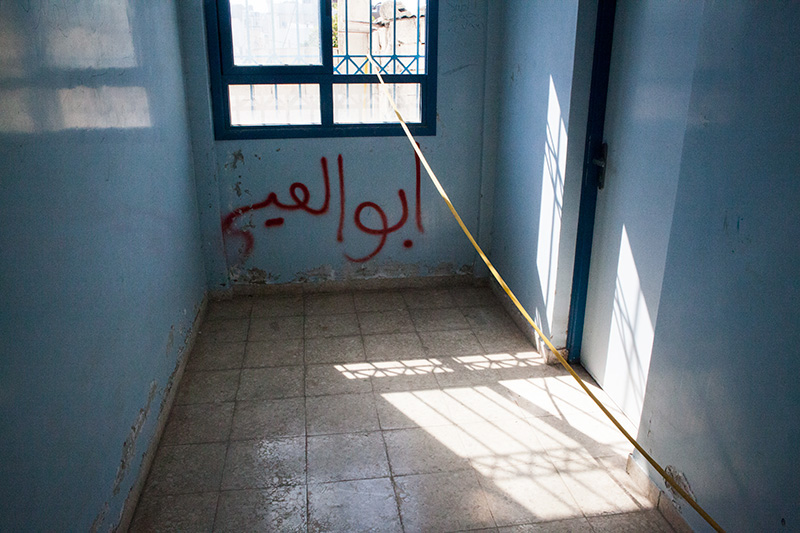
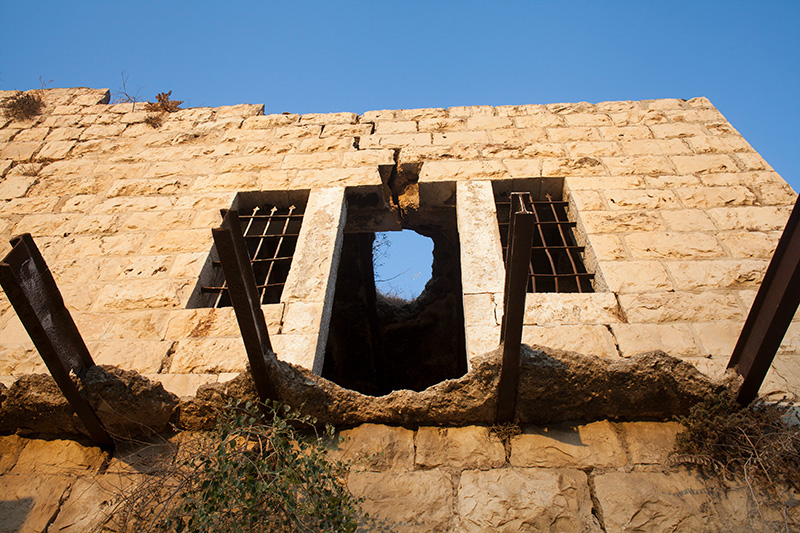
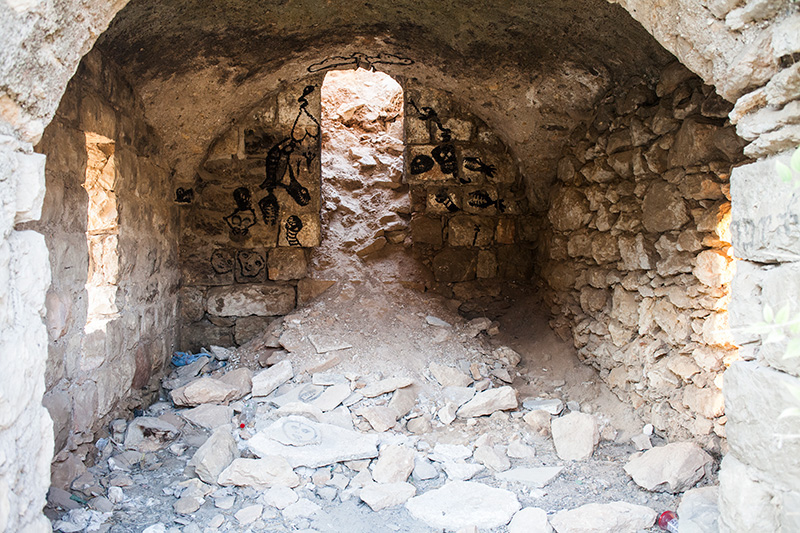
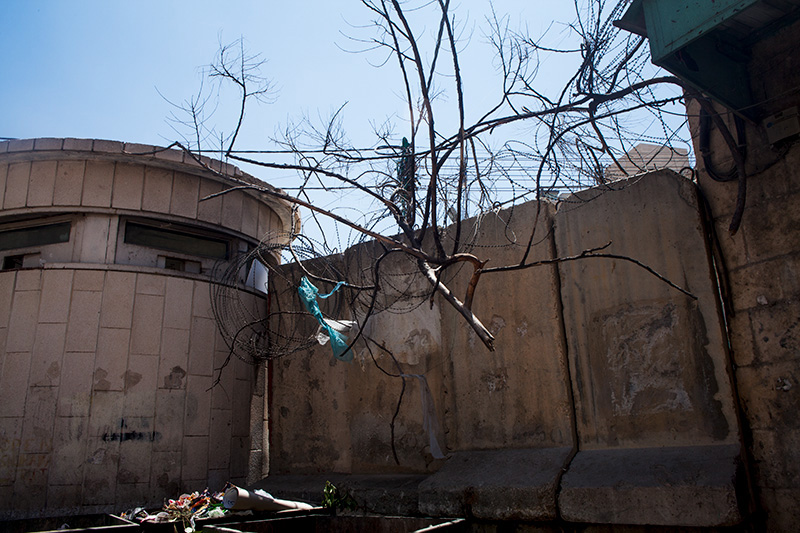
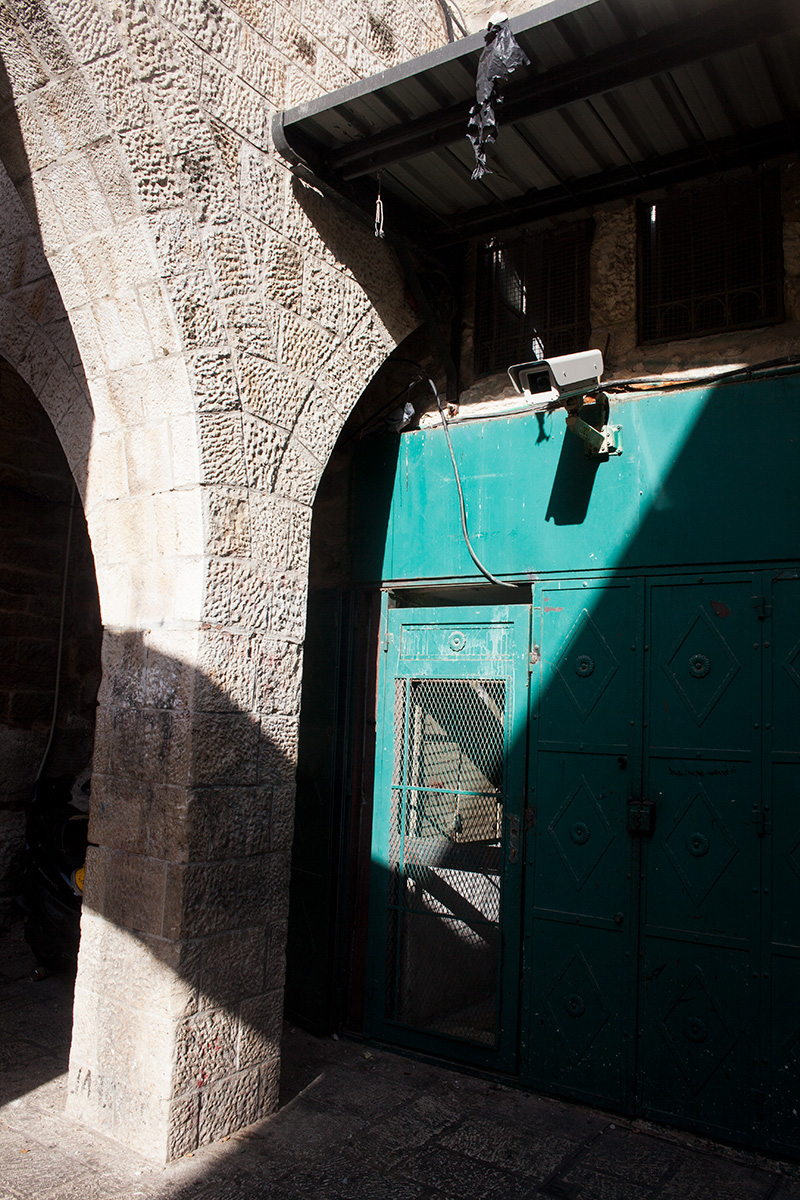

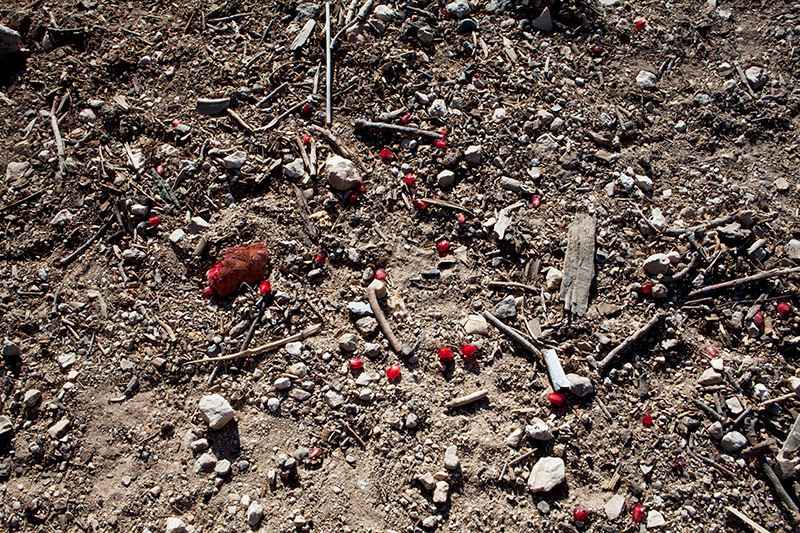
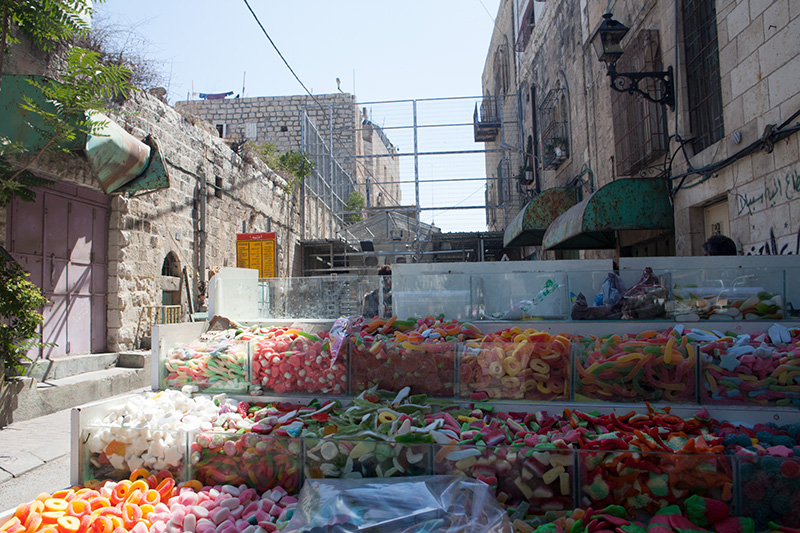
Efterord: Fra pogrom til Nakba
Af Morten Thing
Pogrom er et russisk ord, som betyder forfølgelse. Det er især forbundet forfølgelser af jøder, som var almindelige i Rusland op igennem 1800-tallet. Når man taler om antisemitisme henviser man til denne periode. Især fra 1870erne blev jøder forfulgt, ikke fordi de havde en anden religion end de kristne, som var forfølgerne, men fordi de var født jøder, det var så at sige af biologiske grunde. Ordet antisemitisme blev opfundet i 1860erne. Semitisk var et ord man havde hentet fra sprogvidenskaben, et ord som betegnede sprog som arabisk og bibelhebraisk. De fleste jøder i verden talte imidlertid jiddish, som var et germansk sprog. Ikke desto mindre rettede antisemitismen sig udelukkende mod jøder og ikke mod arabere.
I 1800-tallet udvikles også nationalismerne. En nationalisme bygger på forestillingen om, at der er noget særligt (historisk, sproglig, genetisk) ved folk, som bor i det samme land og som taler det samme sprog. I takt med, at jøderne udsattes for stadigt voldsommere forfølgelser, begyndte også de at tænke i nationale baner. Efter 1881 begyndte mange jøder at udvandre til USA; faktisk udvandrer op imod 2,5 mio russiske jøder til USA mellem 1881 og 1920. Men mange drog dén konsekvens af jødeforfølgelserne, at den eneste måde at slippe for antisemitismen på var, hvis jøderne fik deres eget land. Der var flere, som talte om muligheden for at emigrere til Palæstina, hvor Biblens israelitter havde boet. Men det var den ungarske jødiske journalist Theodor Herzl, som med sin bog Jødestaten og med dannelsen af Zionist Organization i 1897, gjorde alvor Zionismen til politik.
Der var to områder, mente Herzl, som kunne komme på tale som Jødeland: Argentina og Palæstina. Han mente, at Argentina ville være bedst egnet, fordi det var så rigt på naturrigdomme, og fordi det var så spredt bebygget; og på den anden side mente Herzl, at Palæstina jo var jødernes historiske hjemland. Bare navnet indebar et mægtigt, gribende samlingsråb. "Hvis sultanen gav os Palæstina, kunne vi til gengæld tilbyde at ordne Tyrkiets ødelagte finanser. For Europa ville vi udgøre en beskyttelsesmur mod Asien, vi ville blive en kulturens forpost mod barbariet", skrev han i Jødestaten. Herzl var både fantast og pragmatiker. Han havde ingen penge at tilbyde Tyrkiets sultan - og det handlede om millioner - men han tror på idéen. Og han ser klart, hvad et europæisk jødeland ville betyde som forpost i Asien.
Problemerne i tankens konstruktion var mange. Var jøderne et folk, og var de også ét folk? I Europa var der tydeligvis store forskelle mellem jøderne i Vesteuropa, Østeuropa og på Balkan. Måske var de europæiske jøders viden om jøderne i den arabiske verden ikke stor, men de kendte givet til deres eksistens. Men de kendte næppe til de portugisiske 'kryptojøder' eller til de etiopiske 'sorte' jøder eller de kinesiske jøder. Disse randgrupper ville sandsynligvis have gjort det vanskeligere at gøre alle jøder til ét folk. Jøderne havde tydeligvis et sprog, men havde de ét og samme sprog? I Europa talte jøderne jiddish og ladino, men også andre folks sprog, som f.eks. tysk eller fransk. I Persien talte de judeopersisk og nede i Jemen talte de måske en form for hebraisk. Kun hebraisk kunne imidlertid leve op til tanken om ét fællessprog. Problemet var, at næsten ingen kunne tale det, det var et rituelt sprog uden et moderne ordforråd. Når det kom til stykket, var jødernes historie næppe heller én, men flere forskellige spor. Men sammenblandingen af religion og kultur gjorde disse spørgsmål til mindre synlige størrelser, da den jødiske nationalisme blev konstrueret. Og som ved alle andre konstruktioner af nationer i denne tid var det vigtigste, at konstruktionens resultat appellerede til dem, som den skulle mobilisere.
Til problemerne hørte også det forhold, at Palæstina lå i det osmanniske rige og var befolket af nogle arabisktalende palæstinensere. Hvordan skulle man få dem til at acceptere, at millioner af jøder skulle bo i deres land? Netop på grund af disse indlysende problemer var zionismen ikke nogen stærk politisk bevægelse i begyndelsen af 1900-tallet. Ikke mindst var det svært, at få de russiske jøder til at slutte op om ideen. Man anslår, at der i 1900 boede 600.000 i Palæstina, hvoraf 94% var arabere. I 1914 havde Palæstina en befolkning bestående af 657.000 muslimske arabere, 81.000 kristne arabere og 59.000 jøder.
Dertil kom så også, at zionismen var ikke den eneste jødiske nationalisme. Der fandtes også den såkaldte bundisme. Det jødiske socialistparti Bund havde en strategi, som ville skabe mulighed for en plads for jøderne i Rusland som talte jiddish til at have kulturel autonomi, dvs selv bestemme over skole, religion, presse osv. Her var løsningen ikke at samle alle jøder eller kolonisere et fremmed territorium.
Det var første verdenskrig, som ændrede på opslutningen bag zionismen. Det osmanniske rige var en del af krigen, og da englænderne i november 1917 erobrede Jerusalem, ændrede mange jøder holdning til zionismen, nu så den mere realistisk ud. Det blev yderligere underbygget af fredsslutningen. Her fik England Palæstina som mandatområde af Folkeforbundet. Den engelske udenrigsminister, Arthur James Balfour, havde i 1917 sendt Zionist Organization et brev på regeringens vegne, hvori han udtalte, at den engelske regering så positivt på skabelsen af en nationalhjem for jøderne i Palæstina, blot måtte det ikke gå ud over andre gruppers nationale krav.
Zionismen blev styrket, mens bundismen blev svækket. Et resultat af første verdenskrig var, at Polen blev et selvstændigt land. Bund var nu et politisk parti i Polen, men ikke i Rusland efter revolutionen. Bolsjevikkerne akcepterede ikke andre partier end det kommunistiske. Holocaust rettede sig især mod jøderne i Europa, og Polen blev nærmest støvsuget for jøder. Fra at have været en af de helt store politiske bevægelser forsvandt Bund nærmest med holocaust. Zionismen blev styrket, ikke mindst af Balfours gavebrev til Zionist Organization.
Zionismen blev samtidig splittet op i forskellige politiske strømninger. Stærkest var arbejderzionismen, som kæmpede for, at arbejderpartierne blev den ledende kraft i en kommende jødisk stat. Der opstod også en religiøs zionisme. De ortodokse jøder var i begyndelsen imod dannelsen af en jødisk stat, det var at blande sig i guds planer. Når messias kom, skulle Israel opstå. Men nogle religiøse grupper sluttede op bag zionismen i 1930erne. Vigtig var også den revisionistiske zionisme. Det var en højrefløjsstrømning, som især markerede sig ved at fastslå, at der ikke var plads til både jøder og palæstinensere i den kommende stat. Derfor skulle jøderne fordrive palæstinenserne, så man kunne få en ren jødisk stat. Det var ikke kun i denne racisme, de lignede tidens stærke fascistiske bevægelser, også i andre dele af deres politik lignede de, og de blev i et brev til New York Times 4.12.48 af bl.a. Albert Einstein og Hannah Arendt betegnet således:
“Among the most disturbing political phenomena of our times is the emergence in the newly created state of Israel of the "Freedom Party" (Tnuat Haherut), a political party closely akin in its organization, methods, political philosophy and social appeal to the Nazi and Fascist parties. It was formed out of the membership and following of the former Irgun Zvai Leumi, a terrorist, right-wing, chauvinist organization in Palestine.”
På dette tidspunkt var Menachem Begin leder af revisionismen, og det var ham, som havde ledet dens milits, Irgun, gennem anden verdenskrig. Det var Irgun og en anden højrefløjsgruppe Lehi (Stern-gruppen) som den 9. april 1948 lavede en massakre på den palæstinensiske landsby Deir Yassin, som kostede 200 indbyggere af 400 livet.
Baggrunden var den, at FN den 29.11.47 havde foreslået en deling af Palæstina i en arabisk og en jødisk del. Det var Irgun/Lehi imod, de ville have palæstinenserne til at flygte op til den kamp om landet, som for alvor brød løs op til og efter Israel blev proklameret som stat den 14. maj 1948. Den største milits i Palæstina, Haganah, som blev kernen i Israels hær, og Ben-Gurion, den kommende leder af den nye stat, tog afstand fra massakren i Deir Yassin. Nyere forskning har imidlertid vist, at Ben-Gurion og Haganah selv havde planlagt (planen hed ’Plan D’) og udførte en række massakrer af samme type med det formål at få folk til at flygte. Mange blev simpelthen drevet på flugt af militsernes folk. Etableringen af en jødisk stat førte også til militær invasion fra Egypten, Jordan, Syrien og Irak.
Omkring 700.000 palæstinensere flygtede fra deres hjem. Derved fik Israel erobret ca. halvdelen af det område, som FN havde foreslået som arabisk område. Fordrivelsen af de 700.000 kaldes på arabisk Nakba, katastrofen. Ud af en arabisk befolkning på 1,2 mio blev altså mere end halvdelen fordrevet. Den jord og de huse, de forlod, blev israelsk ejendom. De tilbageværende områder af Palæstina blev henholdsvis jordansk og egyptisk territorium. Mellem 1949 og 1950 fordrev Israel yderligere mellem 30. og 40.000 beduiner.
Nitten år efter Nakba startede Israel en lynkrig mod Egypten, Jordan og Syrien, som varede seks dage. Umiddelbart mål var det, at ødelægge Egyptens luftvåben, et andet mål var at erobre mere land og fordrive yderligere palæstinensere. Israel erobrede Golan højderne fra Syrien, Vestbredden med Jerusalem fra Jordan og Gaza og hele Sinai-halvøen fra Egypten. Mange af de mellem 280.000 og 325.000 fordrevne palæstinensere var andengangs fordrevne: De havde boet i flygtningelejre i Golan, Vestbredden og Gaza. Omkring 145.000 var nu dobbelt fordrevne. Det var Nakba, anden del.
I dag taler den israelske regering åbent om, at der ikke er nogen plan om en to-stats-løsning. Derimod har politikken i stedet været at tillade og tilskynde til bosætning på de erobrede områder i strid med international ret. I dag bor der 600.000-750.00 israelske jøder på Vestbredden, herunder Jerusalem, og i Golan. Bosættelserne i Gaza og Sinai er opgivet, i Sinai i forbindelse med fredsslutningen med Egypten i 1979, i Gaza fordi, det var for besværligt at forsvare dem, og fordi Gaza er blevet omdannet til et forsøgsområde for israelske overvågningsprogrammer.
Bosættelserne har medført en apartheid-tilstand. Det er nemlig sådan, at den palæstinensiske befolkning er underkastet militær jurisdiktion, mens bosætterne er en del af det israelske juridiske område. Der findes altså forskellig lovgivning alt efter etniske oprindelse. Strategien er helt enkelt at presse de resterende palæstinensere til at forsvinde. Israel har tilegnet sig 86% af Østjerusalem og 42% af Vestbredden. 11% af Israels 6,6 mio jøder bor nu ulovligt på de erobrede områder.
Der bor i dag ca. 3 mio palæstinensere på Vestbredden og ca. 2 mio i Gaza. Der lever 4.950.000 efterkommere af fordrevne palæstinensere udenfor Israel om de besatte områder.
Morten Thing er en dansk kulturhistoriker, tidligere forskningsbibliotekar ved Roskilde Universitet. Hans moder var Dora Thing, der voksede op på Nørrebro som barn af russiske jøder. Hans fader var Børge Thing, en fremtrædende dansk modstandsmand under Besættelsen og medlem af sabotagegruppen BOPA. (Biografiske info hentet fra Wikipedia).
Afterword: From Pogrom to Nakba
Morten Thing
Pogrom is a Russian word which means persecution. It is particularly associated with the persecution of Jews, which was common in Russia throughout the 19th century. The use of the word antisemitism refers to this period. From the 1870s onwards, Jews were in particular persecuted not because their religion was different to that of the Christians, who were the persecutors, but because they were born Jews; it was for biological reasons, so to speak. The word antisemitism was invented in the 1860s. Semitic was a word borrowed from linguistics, a word which denoted languages such as Arabic and Biblical Hebrew. Most of the world’s Jews spoke Yiddish, however, which was a Germanic language. Nevertheless, antisemitism was directed exclusively at Jews and not at Arabs.
It was also in the 19th century that nationalisms developed. Nationalism is based on the idea that there is something special (historically, linguistically, genetically) about people who live in the same country and speak the same language. As the Jews were subjected to increasingly violent persecution, they also began to think in terms of nationhood. After 1881 many Jews began to emigrate to the United States; in fact almost 2.5 million Russian Jews emigrated to the United States between 1881 and 1920. The persecution of the Jews caused many of them to reach the conclusion that the only way of escaping antisemitism was for the Jews to have their own country. There were several people who spoke of the possibility of emigrating to Palestine, where the Biblical Israelites had lived. But it was the Hungarian Jewish journalist Theodor Herzl who made Zionism into a serious political movement, through his book The Jewish State and the founding of the Zionist Organization in 1897.
Herzl thought that there were two places which could come into consideration for a Jewish country: Argentina and Palestine. He thought that Argentina would be the best suited, because it was so rich in natural resources, and because it was so thinly populated. On the other hand, Herzl thought that Palestine was, naturally, the historical homeland of the Jews. Simply the name itself implied a mighty, gripping call to unification. “If the Sultan gave us Palestine, we could in return offer to put Turkey’s ruined finances in order. For Europe we would form a protective wall against Asia, we would become an outpost of civilization against the barbarians,” he wrote in The Jewish State. Herzl was both a dreamer and a pragmatist. He had no money to offer to the Sultan of Turkey — and it was a question of millions — but he believed in the idea. He also saw clearly the significance of a European Jewish country as an outpost in Asia.
The construction of the idea involved many problems. Were the Jews a people, and were they also one people? In Europe there were clearly great differences between the Jews in western Europe, eastern Europe, and the Balkans. Perhaps the knowledge that the European Jews had of the Jews in the Arab world wasn’t great, but they undoubtedly knew of their existence. They wouldn’t have known, however, about the Portuguese ‘crypto-Jews’, the Ethiopian ‘black’ Jews, or the Chinese Jews. These marginal groups would presumably have made it more difficult to make one people of all Jews. The Jews clearly had a language, but was it one and the same language? In Europe the Jews spoke Yiddish and Ladino, but also the languages of other peoples, for example German and French. In Persia they spoke Judaeo-Persian, while in Yemen they perhaps spoke a form of Hebrew. Only Hebrew, however, could live up to the idea of one common language. The problem was that hardly anybody could speak it; it was a ritual language without a modern vocabulary. When it came down to it, the history of the Jews was not one story, but many different ones. But the intermingling of religion and culture made these questions less evident at the time Jewish nationalism was being constructed. And as with all other constructions of nationhood at that time, the most important thing was that the result of the construction appealed to those it was intended to mobilize.
One of the problems was also the fact that Palestine was part of the Ottoman Empire, and was peopled by Arabic-speaking Palestinians. How should they be made to accept that millions of Jews were to live in their country? Precisely because of these obvious problems, Zionism was not a powerful political movement at the beginning of the 20th century. It was difficult, not least, to get the Russian Jews to support the idea. It is estimated that in 1900, 600.000 people lived in Palestine, of which 94% were Arabs. In 1914, Palestine had a population made up of 657.000 Muslim Arabs, 81.000 Christian Arabs, and 59.000 Jews.
In addition, Zionism was not the only form of Jewish nationalism. There was also so-called Bundism. The strategy of the Jewish socialist party Bund was to make possible a place where the Yiddish-speaking Jews of Russia could have cultural autonomy, i.e. self-determination regarding schools, religion, the press etc. Here gathering together all Jews or colonizing a foreign territory was not the solution.
It was the First World War which altered popular support for Zionism. The Ottoman Empire took part in the war, and when the British conquered Jerusalem in November 1917, many Jews changed their opinion about Zionism now that it looked more plausible. This was further supported by the peace treaty, in which Britain was given Palestine as a mandate by the League of Nations. The British Foreign Minister, Arthur James Balfour, had sent the Zionist Organization a letter on behalf of the government in 1917, in which he stated that the British government looked favourably on the creation of a national homeland for the Jews in Palestine, as long as it didn’t affect the national claims of other groups.
Zionism was strengthened, while Bundism was weakened. One result of the First World War was that Poland became an independent country. Bund was now a political party in Poland, but not in Russia following the revolution. The Bolsheviks would accept no other party than the Communist party. The Holocaust was directed in particular at the Jews in Europe, and they were almost entirely eradicated in Poland. With the Holocaust, Bund had gone from being one of the largest political movements to having almost disappeared. Zionism was strengthened, not least by Balfour’s deed of gift to the Zionist Organization.
At the same time, Zionism was split into various political factions. The strongest was Labour Zionism, whose agenda was that the worker’s parties become the life force of the future Jewish state. A religious Zionism also arose. In the beginning the Orthodox Jews were against the formation of a Jewish state, as this was to involve oneself in God’s plans. Israel would arise when the Messiah came. But some religious groups lent their support to Zionism in the 1930s. Revisionist Zionism was also important. It was a right wing movement, which in particular defined itself by stating that there was no place for both Jews and Palestinians in the future state. The Jews had therefore to expel the Palestinians, so that a pure Jewish state could be established. It was not only in this racism that the Revisionists were similar to the powerful Fascist movements of the time, other aspects of their politics were also similar, and in a letter to The New York Times on 4/12/48 they were described as follows by among others Albert Einstein and Hannah Arendt:
“Among the most disturbing political phenomena of our times is the emergence in the newly created state of Israel of the "Freedom Party" (Tnuat Haherut), a political party closely akin in its organization, methods, political philosophy and social appeal to the Nazi and Fascist parties. It was formed out of the membership and following of the former Irgun Zvai Leumi, a terrorist, right-wing, chauvinist organization in Palestine.”
At this time Menachem Begin was the leader of Revisionism, and it was he who had led its militia, Irgun, during the Second World War. It was Irgun and another right wing group Lehi (the Stern Gang) which massacred the Palestinian village Deir Yassin on 9 April 1948, costing 200 of the 400 inhabitants their lives.
The background for this was that on 29/11/47 the UN had proposed the partitioning of Palestine into an Arabic and a Jewish part. Irgun/Lehi were against this; they wanted the Palestinians to flee in the lead-up to the battle for the country which broke out in earnest prior to and following the proclamation of Israel as a state on 14 May 1948. The largest militia in Palestine, Haganah, which became the core of the Israeli army, and Ben-Gurion, the future leader of the new state, distanced themselves from the massacre in Deir Yassin. New research has shown, however, that Ben-Gurion and Haganah had themselves planned (the plan was called ‘Plan D’) and executed a number of massacres of the same type, with the aim of making people flee. Many were simply forced to flee by the militiamen. The establishing of a Jewish state also led to military invasions by Egypt, Jordan, Syria, and Iraq.
Around 700.000 Palestinians fled from their homes. In this way Israel captured approximately half of the area which the UN had proposed should be the Arabic territory. The displacement of the 700.000 is called Nakba in Arabic, ‘the catastrophe’. Of an Arabic population of 1.2 million, more than half was displaced. The land and the houses they left behind became Israeli property. The remaining areas of Palestine became Jordanian and Egyptian territory respectively. Between 1949 and 1950, Israel displaced another 30 to 40.000 beduins.
Nineteen years after Nakba, Israel began a blitzkrieg against Egypt, Jordan, and Syria, which lasted for six days. The immediate aim was to destroy Egypt’s air force, a second aim was to conquer more land and displace more Palestinians. Israel captured the Golan Heights from Syria, the West Bank including Jerusalem from Jordan, and Gaza and the entire Sinai peninsular from Egypt. Many of the 280.000 to 325.000 displaced Palestinians were displaced for a second time: they had lived in refugee camps in Golan, the West Bank, and Gaza. Around 145.000 were now twice displaced. This was Nakba, part 2.
Today, the Israeli government speaks openly about there being no plan for a two-state solution. The policy has instead been to allow and encourage settlement in the captured territories, in contravention of international law. 600.000 to 750.000 Israeli Jews now live in the West Bank, including Jerusalem, and in Golan. The settlements in Gaza and Sinai have been abandoned — in Sinai in connection with the peace accord with Egypt in 1979, in Gaza because it was too difficult to defend them, and because Gaza has been turned into a testing ground for Israeli surveillance programmes.
The settlements have led to an apartheid situation. For it is the case that the Palestinian people are subject to military jurisdiction, while the settlers are encompassed by the Israeli juridical area. Different laws apply according to ethnic origin. The strategy is quite simply to pressure the remaining Palestinians to disappear. Israel has appropriated 86% of East Jerusalem and 42% of the West Bank. 11% of Israel’s 6.6 million Jews now live illegally in the captured territories.
The West Bank is today divided into zones and criss-crossed by roads which are only for Israelis. In order to move around the West Bank, Palestinians have to pass through checkpoints, where their papers are checked by Israeli soldiers, a process that can take hours.
On Monday 19 March this year, the Israeli military court of appeal denied the 17-year-old Palestinian Ahed Tamimi an open trial. She had punched an Israeli soldier. On 22 March she was sentenced to 8 months imprisonment and a fine of 6.000 shekels. On Monday 19 March the military court shortened to 9 months the Israeli soldier Elor Azaria’s sentence for having in 2016 shot a captured Palestinian in the head at close range, causing his death. The Army Commander had already reduced the original sentence from 18 to 14 months. Which is to say: 8 months for a punch if you are Palestinian, 9 months for murder if you are Israeli.
Today, approximately 3 million Palestinians live in the West Bank, and approximately 2 million in Gaza. 4.950.000 descendants of displaced Palestinians live outside Israel around the occupied territories.
Morten Thing is a Danish culture historian, and a former research librarian at Roskilde University. His mother was Dora Thing, who gre up in the Nørrebro area of Copenhagen as the child of Russian Jews. His father was Børge Thing, a prominent member of the Danish resistance during the Occupation of Denmark and a member of sabotage group BOPA. (Translated from Wikipedia).